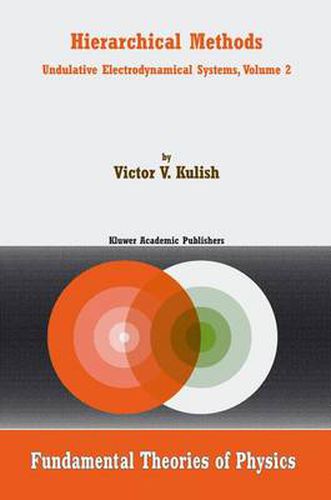Readings Newsletter
Become a Readings Member to make your shopping experience even easier.
Sign in or sign up for free!
You’re not far away from qualifying for FREE standard shipping within Australia
You’ve qualified for FREE standard shipping within Australia
The cart is loading…






This title is printed to order. This book may have been self-published. If so, we cannot guarantee the quality of the content. In the main most books will have gone through the editing process however some may not. We therefore suggest that you be aware of this before ordering this book. If in doubt check either the author or publisher’s details as we are unable to accept any returns unless they are faulty. Please contact us if you have any questions.
The book consists of two Volumes. The first (the preceding volume) is devoted to the general nonlinear theory of the hierarchical dynamic oscillative-wave systems. This theory has been called the theory of hi- archical oscillations and waves. Here two aspects of the proposed theory are discussed. The first aspects concern the fundamental nature and the basic c- cepts and ideas of a new hierarchical approach to studying hierarchical dynamic systems. A new hierarchical paradigm is proposed as a - sis of a new point of view of such types of systems. In turn, a set of hierarchical principles is formulated as the fundamental basis of this paradigm. Therein the self-resemblance (holographic) principle plays a key role here. An adequate mathematic description (factorization) of the proposed paradigm is carried out. The concepts of structural and dynamic (functional) operators are put into the basis of this descr- tion. Electrodynamics is chosen as a convenient basis for an obvious demonstration of some key points of the proposed new theory. The second aspect has a purely mathematical nature. It is related to the form of factorization (i.e., mathematical description) of hier- chical types of dynamic models, and discussion of the methods of their mathematical analysis. A set of the hierarchical asymptotic analytical- numerical methods is given as an evidence of the practical effectiveness of the proposed version of hierarchical theory.
$9.00 standard shipping within Australia
FREE standard shipping within Australia for orders over $100.00
Express & International shipping calculated at checkout
This title is printed to order. This book may have been self-published. If so, we cannot guarantee the quality of the content. In the main most books will have gone through the editing process however some may not. We therefore suggest that you be aware of this before ordering this book. If in doubt check either the author or publisher’s details as we are unable to accept any returns unless they are faulty. Please contact us if you have any questions.
The book consists of two Volumes. The first (the preceding volume) is devoted to the general nonlinear theory of the hierarchical dynamic oscillative-wave systems. This theory has been called the theory of hi- archical oscillations and waves. Here two aspects of the proposed theory are discussed. The first aspects concern the fundamental nature and the basic c- cepts and ideas of a new hierarchical approach to studying hierarchical dynamic systems. A new hierarchical paradigm is proposed as a - sis of a new point of view of such types of systems. In turn, a set of hierarchical principles is formulated as the fundamental basis of this paradigm. Therein the self-resemblance (holographic) principle plays a key role here. An adequate mathematic description (factorization) of the proposed paradigm is carried out. The concepts of structural and dynamic (functional) operators are put into the basis of this descr- tion. Electrodynamics is chosen as a convenient basis for an obvious demonstration of some key points of the proposed new theory. The second aspect has a purely mathematical nature. It is related to the form of factorization (i.e., mathematical description) of hier- chical types of dynamic models, and discussion of the methods of their mathematical analysis. A set of the hierarchical asymptotic analytical- numerical methods is given as an evidence of the practical effectiveness of the proposed version of hierarchical theory.